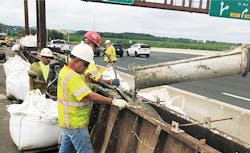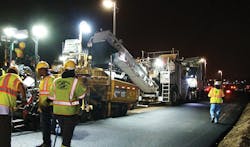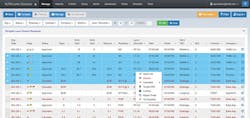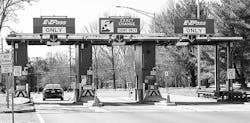Work zone reservation management in the 21st century
Roadway work zone planning and installation standards are well-defined.
But managing work zone access requests from multiple contractors and roadway maintenance departments simultaneously is a tedious, manual process for most transportation agencies. The responsibility often rests on the shoulders of a small group of experienced staff who somehow manage to commit complex traffic manual policy to memory, wrangle multiple spreadsheets, and herd hundreds of weekly road-closure requests via phone, text, email, and paper, all while corralling disparate permits, contracts, and insurance documents. They also must balance overlapping requests and conflicting dates and times, while trying to minimize disruptions for the traveling public.
Such was the case for the New Jersey Turnpike Authority, whose small, experienced team was fielding 800+ lane closure requests per week using a dated, Excel-based system. Facing the loss of the team’s institutional knowledge as several members prepared for retirement, they were inspired to seek a more automated solution.
Much at stake
Managing work zone access to ensure safe and effective installation is a high-risk area for any transportation agency.
Miscommunication can be costly. A mistake in coordinating lane closures, for example, can result in unintended consequences—such as expensive equipment being brought on the roadway construction site and being unable to access the roadway as anticipated. Miscommunication also can cause a contractor to be working without necessary contracts, permits, or insurance certifications. In the worst case, an error in managing work zone reservations can lead to accidents.
The New Jersey Turnpike Authority worked with HNTB to develop a work zone access management application that has been active since 2014. It enables contractors, engineering, and maintenance departments and other users requiring highway occupancy to request a lane closure. It then routes the request through an automated approval workflow and communicates the status via email, text, and application alerts. It also validates the request against the authority’s traffic manual and policies.
Here’s how it addresses each risk point:
- Automated notification workflows allow for easy communication via text and email on any device—among the authority staff themselves and with contractors, utilities, others needing permits, state police, traffic maintenance centers, and other agencies involved in communicating with the public. This includes approvals, denials, cancellations, and suspensions. The requestor and the staff can see what is going on at each approval step, which reduces workload and improves both compliance and data collection.
- It automatically validates data with the traffic manual policy, including roadway models, taper points, timetables, special event restrictions, and work zone conflict rules.
- Communication with state police is automated as well, meeting their information requirements for purposes of vehicle planning, reporting, and cancellations.
- Reporting and audit tracking are included, with features that allow traffic operations users to generate information requests in real-time.
- The system automatically publishes information about closures to other transportation agencies and public-facing websites.
- It allows the agency to visualize work zone conflicts based on established traffic manual rules. With the push of a button, they can look across all active requests to flag conflicts, in order to make decisions about which closure requests to approve.
The technology is accessible and universally available on both desktop and mobile devices.
The results have been positive, with the Authority now managing up to 1,200 lane closure requests per week during peak construction season, including more than 350 active traffic permits and 500 active users. They estimate a time savings of about 25% over their previous process.
More enhancements to come
The New Jersey Turnpike Authority continues improving on the application to support evolving user needs. Among the enhancements under consideration are:
- Integration with other software applications, such as enhanced traffic management systems.
- An expanded dashboard with performance measures that integrate average daily traffic data to assist in decision-making.
- Automated reservation request approvals based on validation criteria.



